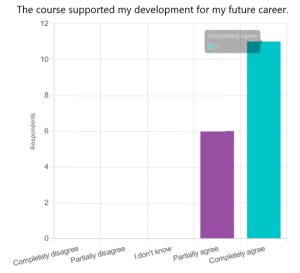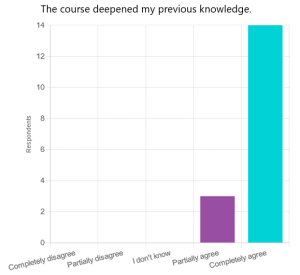The intensive course on active and passive sensing took place between the 27th of February and 1st of March at the campus of the University of Oulu. Participants included both MSc students and PhD researchers from 5 universities. The aim of the course was to deepen active and passive sensing techniques to assess sustainable lifestyles and mobility in the context of urban planning with the using geographic information science.
On the first day, participants were introduced to the theory behind participatory mapping through lectures and peer teaching. In the afternoon, they had the chance to put theory into practice by testing surveys, understanding the data structure, and visualizing the collected data. The evening ended with a relaxed social event in the city center.
The second day focused on the methodologies of spatial pattern analysis. Practical exercises included activity space modelling (with guest lecturer Kamyar Hasanzadeh from the University of Helsinki), spatial accessibility analysis, and multimodal road network design. After an intense day of using their brains, many took the opportunity to get some intense exercise in the climbing gym.
The third day of the was headlined with Telia Insights mobility data, with a lecture held by the company’s experts and with exercises built around the use of the valuable data. The schedule included both demonstrations and opportunities for independent analyses.
The final day started with a fascinating presentation on the cycling infrastructure in Oulu by transport engineer Harri Vaarala. The discussion summarising the previous day’s topics was followed by a workshop, where the goal for the participants was to co-create urban mobility scenarios and solutions that integrate passive and active sensing.
All participants provided feedback, which shows high satisfaction with the course materials, teaching methods, and learning outcomes.


We would like to express our gratitude to Marketta Kyttä, Nora Fagerholm, and Ossi Kotavaara for organizing this course. We also extend our appreciation to Harri Antikainen and Terhi Ala-Hulkko for their invaluable assistance in teaching. Last but not least, we thank the participants for their active involvement.




